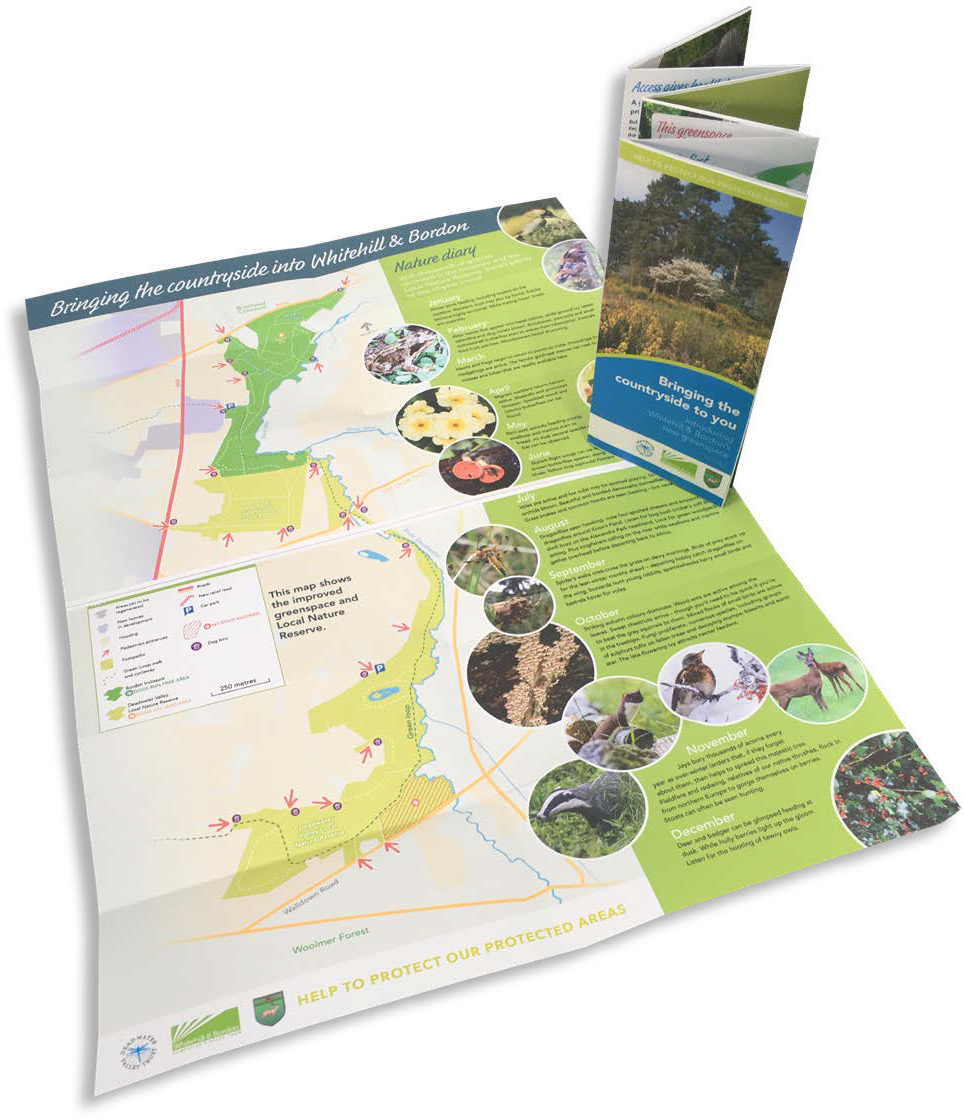2015-17
Whitehill and Bordon, dealing with dogs in the Deadwater Valley
Supporting the establishment of SANGs within a new green town

Background
Whitehill & Bordon is a regenerating town in East Hampshire. Following the withdrawal of its MOD barracks, a new green town was being created in its place and the town’s population was set to almost double.
But, along with about three thousand new homes this “urban expansion” is set to involve, it was feared there would be increased disturbance to the surrounding environmentally sensitive areas (a ring of five SSSI’s). For as a consequence of this growth in recreation activity, dog disturbance and cat predation would probably become major issues for Whitehill & Bordon’s urban greenspaces.
To offset this pressure it was decided to use some of the released Army land to create two SANGS within the town that would help retain as much of this additional access traffic within the Town’s boundaries.
The Deadwater Valley Trust (DVT), an established local conservation body, was presented with the opportunity to manage these two SANG sites and the role of Share-with care has been to assist them in preparing for this task.
Project
 First, Share-with care undertook a series of PPT workshops aimed at informing the Trust, conservation bodies and town council officers about how best to support conservation around the Town.
First, Share-with care undertook a series of PPT workshops aimed at informing the Trust, conservation bodies and town council officers about how best to support conservation around the Town.
Second, Share-with care then helped to formulate a package of messages aimed at current residents and newcomers to ensure they better appreciate the value of Whitehill Town Council’s twin SANG asset. To that end a 24pp DL leaflet/poster was prepared for incorporation into the newcomers’ welcome pack. This material was confined to introducing the first SANG, Bordon Inclosure.
This work also contributed to a website, hosted on the Trust’s existing site. And underpinning all of this was a highly active social media programme run by the Trust’s community ranger.
In due course it is planned to continue to deliver the twin benefits of health and Nature message via conservation volunteers, led by the Trust’s countryside rangers. These volunteers would be trained using material jointly compiled by Share-with care and DVT, to provide a cascade of effective messages directed at all site users.
 Outcome
Outcome
The principle of a low-cost communications programme to trigger beneficial behavioural change amongst the local communities got underway. The Whitehill & Bordon Regeneration Company’s efforts may now be applied to building a team of dog ambassadors to add to the present network of volunteers, thus spreading this communications load.
